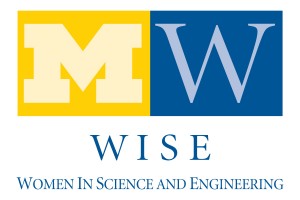Computational Biology Research Camp for High School Students
RNA Biomarkers in Lung Cancer
Overview: This camp provides computational methods in the context of disease research. After a brief overview of the emerging field of medical genomics, the camp will cover the use of computational tools to analyze RNA expression data of lung cancer patients. Given the rapid advances in sequencing technologies and the advent of massive datasets, turning data into knowledge is increasingly essential. We will show how to use publicly available tools to identify lung cancer biomarkers. Our premise is that the Human Genome Project will soon become your own genome quest. No prior knowledge is needed beyond introductory biology. Lunch included. Bring your laptops.
miRcore high school volunteers in the area have been founding GIDAS (pronounce: guide-us; Genes in Diseases and Symptoms) school club; this camp provides basic knowledge towards volunteer qualification.
DATE: December 5, 2015
LOCATION: Room 1670 Bob and Betty Beyster Building, University of Michigan, 2260 Hayward Street, Ann Arbor, MI 48109
OPEN miRcore volunteer meeting TIME: 1:30 pm – 4:30 pm
All campers are invited to attend the following miRcore volunteer meeting in the same room.
1:30 – 2:30 pm Bioinformatics talk, Yuanfang Guan Ph.D., Assistant Professor of Department of Computational Medicine & Bioinformatics, University of Michigan.
2:30 – 3:30 pm UCSC genome browser and GeneCards (Valuable for 2016 Genes and Health Contest. A computer or smartphone/tablet is needed).
3:30 – 4:30 pm UM GIDAS workshop: Resume building and leadership.
CAMP TIME: 9:30 am – 1:30 pm
FEE: $50
Online option available.
MAIN TARGETS: high school students (young women and men) who are interested in computer, math, biology, and medicine.
Sponsor: Women In Science and Engineering (WISE)
|
You will receive email confirmation of the registration and payment. |
Goals
- Expose high school students to the emerging era of medical genomics, when all doctors must be well-acquainted with genetic discoveries, technologies, and applications.
- Give high school students an opportunity to enjoy science. (Hear one student talking about it at TEDxYouth.)
- Support GIDAS (Genes In Diseases And Symptoms) club members in acquiring in-depth knowledge in the field.
- Prepare high school students for the 2016 Genes and Health Contest.
- Provide high school students tools for Science Fair projects.
- Prepare high school students to present at the 2016 Research Conference and publish an abstract.
- Encourage high school students to write a research paper in the Jounal of Emerging Investigators.
- Activated NF-κB Pathway in an Irf6-Deficient Mouse Model for Van der Woude Syndrome. Sanika S. Kulkarni(1), Jungwoo Chang(2), and Inhan Lee(3):(1) Pioneer High School, (2) Huron High School, (3) miRcore, Ann Arbor, MI.
- Transcriptional Regulators are Upregulated in the Substantia Nigra of Parkinson’s Disease Patients. Marianne Cowherd(1) and Inhan Lee(2): (1)Community High School, (2)miRcore, Ann Arbor, MI.
Tentative Agenda
|
Genomics and Medicine Personalized medicine, genomics, and disease Goal: understand shortcomings in current medical practices and the promise of the emerging field of medical genomics |
|
Lung Cancer Online resources about diseases – symptoms, diagnostics, treatment, social impact Goal: be able to find scientific information related to disease of interest |
|
Lung Cancer and Genes Genes and OMIM Goal: Understand diverse gene signatures in lung cancer |
|
Grab lunch |
|
RNA Expression and Microarray Understand RNA and microarray technology |
|
RNA Biomarkers of Lung Cancer NCBI tools including GEO and GEO2R |

